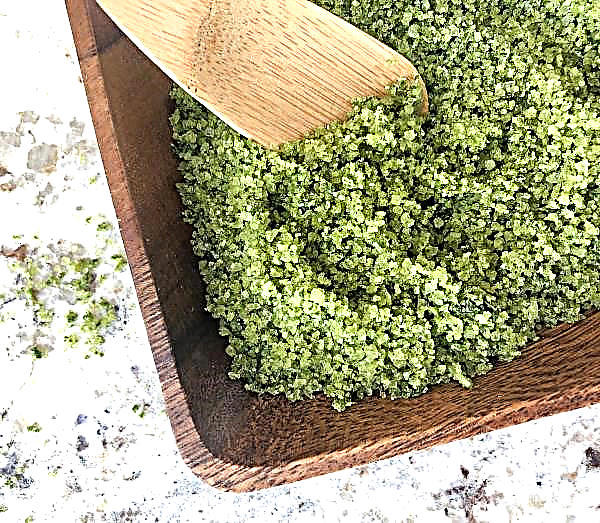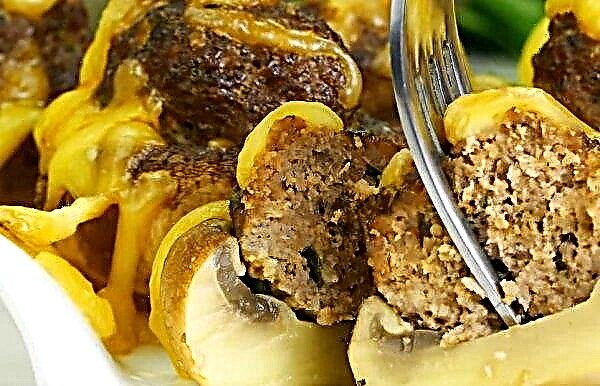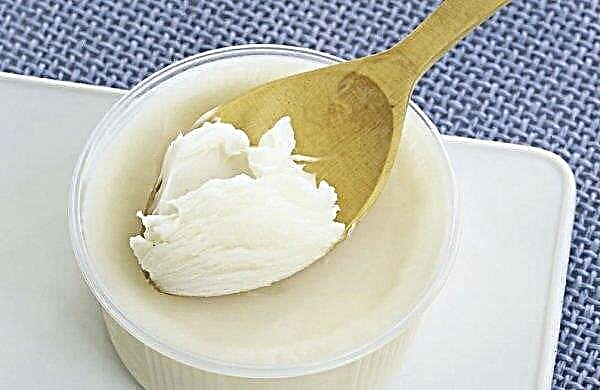Angelica is a herbaceous plant that grows almost throughout Europe, as well as in Siberia. It has aromatic, medicinal and decorative properties. Honey from it turns out to be the same healing and very fragrant. About what properties taiga honey has, and how to apply it, read in this review.
Characteristics and description of angelica honey
The product consists of sugar (70–80%), as well as wax, pollen, natural dyes that are found in honey plants, and aromatic components. Angelica honey has softening, soothing and nourishing properties. It is also a stimulator of the immune system, has antioxidant and antibacterial properties, which positively affects the condition of the body.
Angelica Altai honey is obtained from medicinal angelica (angelica), which is an excellent honey plant. The plant grows well on moist soils, so it can form whole thickets near water bodies.

What the angelica nectar looks like depends on its constituents. The product obtained from wild herbs will always be quite dark. Angelica nectar turns reddish and can take on a more or less saturated brown hue. Angelica honey is fragrant, has a rich taste and a light “caramel” note. A distinctive property of this variety is its slow crystallization; it is almost not sugared.
Angelica nectar is saturated with medicinal components of herbs, including their bioflavonoids. Thus, you not only benefit from the use of the product, but also absorb the benefits of the herbs from which it is derived.
Did you know? Honey, unlike most products, does not deteriorate over time. The oldest known specimen found in the ancient Egyptian tomb is about 3 thousand years old, and it is still completely edible.
Chemical composition and calorie content
The product collected from herbs growing in Siberia is of the highest quality and belongs to the elite varieties. The flowering period of angelica always coincides with the flowering of various herbs, which also contribute to both the chemical composition and the usefulness of the product. The angelica can be joined by the nectar of white and red clover, sage, snakehead and other herbs.

The ratio of fructose and glucose is the main characteristic of any honey. The more fructose, the slower the crystallization. Any beekeeper knows how to check the naturalness of honey. But the consumer is more difficult to do. But you can focus on the persistent spicy aroma of angelica essential oils and a pronounced caramel aftertaste.
The product is rich in digestible monosaccharides, active enzymes (for example, diastase), antioxidants, as well as substances with antibacterial properties. It also has a whole range of macro- and micronutrients and almost all vitamins. But they are contained in minor amounts for the daily diet.
Important! You can always return crystallized honey to a liquid state. To do this, just place the container with it in warm water.
There are a lot of biologically active plant compounds in the nectar, which creates such a high value of the product. In 1 tbsp. l The product (21 g) contains 64 kcal and 17 g of sugar, including fructose, glucose, maltose and sucrose. Angelica honey contains virtually no fiber, protein, and no fat at all.
The effect of angelica honey on the human body
High quality angelica honey contains many important antioxidants. These include organic acids and phenolic compounds. Antioxidants are associated with a reduced risk of heart attacks, strokes, and certain cancers.

They also contribute to:
- good eyesight;
- a slight decrease in blood pressure.
The product is an effective treatment for diabetic foot ulcers, which can lead to amputation in the absence of proper treatment. The healing properties of nectar are also due to its anti-inflammatory effect. For children over 1 year old, the product can act as a natural and safe cough suppressant. Some studies show that it is even more effective than a cough medicine.
Useful qualities
Special studies of the medicinal properties of angelica honey have not been carried out, so its beneficial qualities are usually described by traditional medicine.

- Such a product:
- supports immunity;
- has an anti-inflammatory effect;
- beneficial effect on the structure of the skin;
- used for colds and cough;
- It has a wound healing effect and regenerates cells;
- used for the prevention of cardiovascular disease;
- stimulates brain activity;
- can be used as a sedative and diuretic.
Angelica nectar is useful for:
- flatulence;
- diseases of the stomach;
- gastritis;
- lung diseases: pneumonia, bronchitis.
Did you know? Bees control the thickness and transparency of their honey by flapping wings at the ventilation points in the hive at different speeds to control the evaporation of water.
It can be washed down with tea with rosehip or lemon, which increases the set of useful properties. There are many recipes for honey infusions, which can be found both in ancient medical books and in modern books.
Harm and danger of use
Honey is considered an allergenic product, so it should be used with caution in baby food and in the diet of allergy sufferers. Caution should be taken when using it during pregnancy and lactation, as well as in patients with diabetes mellitus. And although this product contains fructose, which is involved in normalizing sugar levels in the body, diabetics should consult their healthcare provider before using angelica nectar.

Indications for use
The use of the bee product began as early as 8 thousand years ago. Since ancient times, people have discovered many useful properties of this substance: it was used in the treatment of wounds and intestinal diseases, it strengthened health and improved well-being.
Now it is used in the treatment of:
- colds
- gastrointestinal diseases;
- diseases of the cardiovascular system;
- respiratory ailments.
In addition, the product is used in cosmetic procedures, as well as to strengthen the immune system and as a means of preventing colds.
Did you know? Of the more than 20 thousand known species of bees, only 7 produce honey.
Colds
Honey is recommended for colds, because it helps to naturally relax the sore throat. It also strengthens the immune system, which helps to recover faster and reduces the likelihood of a cold in the future. As soon as the first symptoms of a cold have appeared, start consuming honey for 1-2 tbsp. in a day.
Gastrointestinal diseases
The antioxidant properties of bee nectar inhibit the activity of microorganisms responsible for fermentation. Being a prebiotic, the product changes the balance of intestinal microflora, stimulating the growth and activity of beneficial organisms and suppressing potentially harmful bacteria.  It is a suitable sweetener for milk, which does not inhibit the growth of beneficial microflora, which is important for maintaining the health of the gastrointestinal tract. Honey also increases and supports the growth of bifidobacteria.
It is a suitable sweetener for milk, which does not inhibit the growth of beneficial microflora, which is important for maintaining the health of the gastrointestinal tract. Honey also increases and supports the growth of bifidobacteria.
Diseases of the cardiovascular system
In the treatment of coronary heart disease, arrhythmias and myocardial infarction, antiarrhythmic drugs are prescribed. In this quality, honey can also be used. Its flavonoids reduce the risk of cardiovascular disease. The protective effects of phenolic compounds include antithrombotic, anti-ischemic, antioxidant and vasorelaxant properties and reduce the risk of coronary artery disease due to improved coronary vasodilation and reduced platelet clotting ability.
Did you know? In England, it is customary to give a piece of wedding cake to bees, otherwise it is believed that the bees will stop making honey.
Natural honey reduces the possibility of developing cardiovascular disease in people at risk and does not increase body weight in people who are overweight or obese. It also lowers venous blood pressure, which can reduce the burden on the heart and therefore reduce stagnation in the venous system.
ENT diseases, bronchial asthma
The bee product is used all over the world for the treatment of various ophthalmic conditions, such as blepharitis, keratitis, conjunctivitis, corneal damage, chemical and thermal eye burns. It can be used as an ointment.

According to studies, 85% of patients showed improvement, and the rest simply did not progress the disease. Its use in infectious conjunctivitis reduced redness, edema, purulent discharge and destroyed pathogenic bacteria. Nectar is used in the treatment of bronchial asthma and respiratory organs. The therapeutic agent is applied to the chest area.
Skin diseases
Angelica nectar has an inhibitory effect on pathogenic microflora. It stops the production of toxins, so skin and superficial mycoses, for example, ringworm, are sensitive to its components. It is also effective in treating seborrheic dermatitis.
Lesions treated with honey show less swelling, accelerated wound healing occurs. It reduces inflammation, promotes healing, reduces the size of scars and stimulates tissue regeneration.
Important! Bees can collect honey from any flowers, including poisonous ones, so you should not buy the product from unknown manufacturers.
Disease prevention
Pathogenic microflora can lie in wait for us everywhere. In order to resist it, stable immunity is necessary. Honey is able to provide it due to its antibacterial properties.

Unlike antibiotics, it avoids the emergence of bacterial resistance to antimicrobial agents. To prevent disease and support immunity, it is enough to eat 1 part of the product per day.
How to distinguish angelica honey from fake
Key features of this product:
- dark red-brown color, may be with a greenish tint due to the admixture of other taiga herbs;
- sharp persistent aroma;
- caramel aftertaste, long lasting in the mouth;
- viscous consistency.
Terms and conditions of storage
The beneficial components of angelica honey are destroyed by heat, light and oxygen. At temperatures above + 35 ° C, aromatic substances evaporate. In addition, in a room with high humidity, the product may ferment, so it is stored in a dark and dry place. The optimum storage temperature is +10 ... + 15 ° С, air humidity - 60%.
Did you know? The Himalayan honey bee, the largest of the honey bees, produces hallucinogenic honey. It is also called "crazy" or "red." Himalayan bees collect nectar from some species of rhododendron growing in the mountains, which contain hallucinogens.
The product also tolerates low temperature freezing. After that, he needs to be allowed to slowly thaw. Today, natural medicines are considered very effective therapeutic agents, so the use of honey, including angelica, is justified and quite effective. Its useful properties allow you to recommend it to almost all people, without exception.












